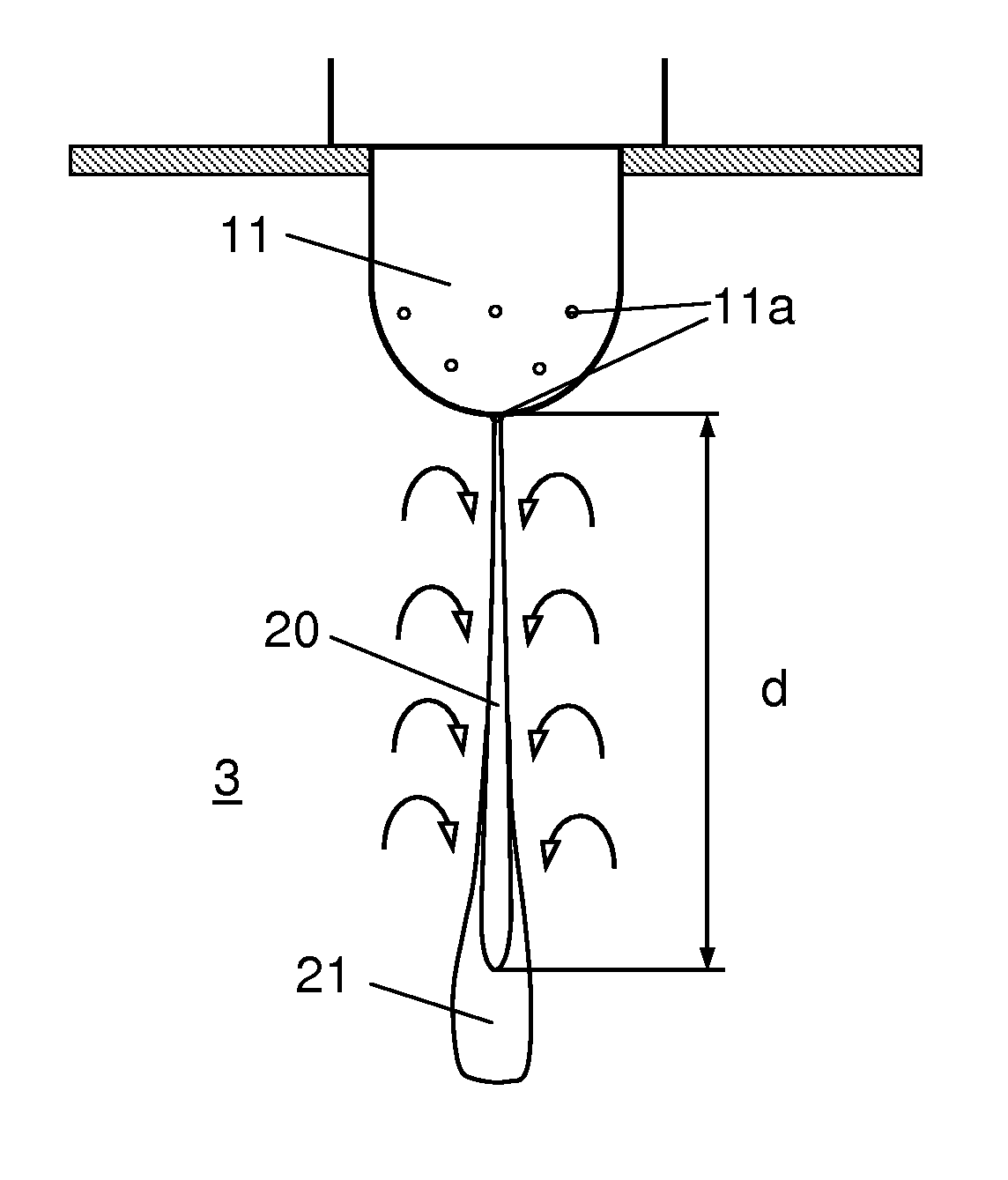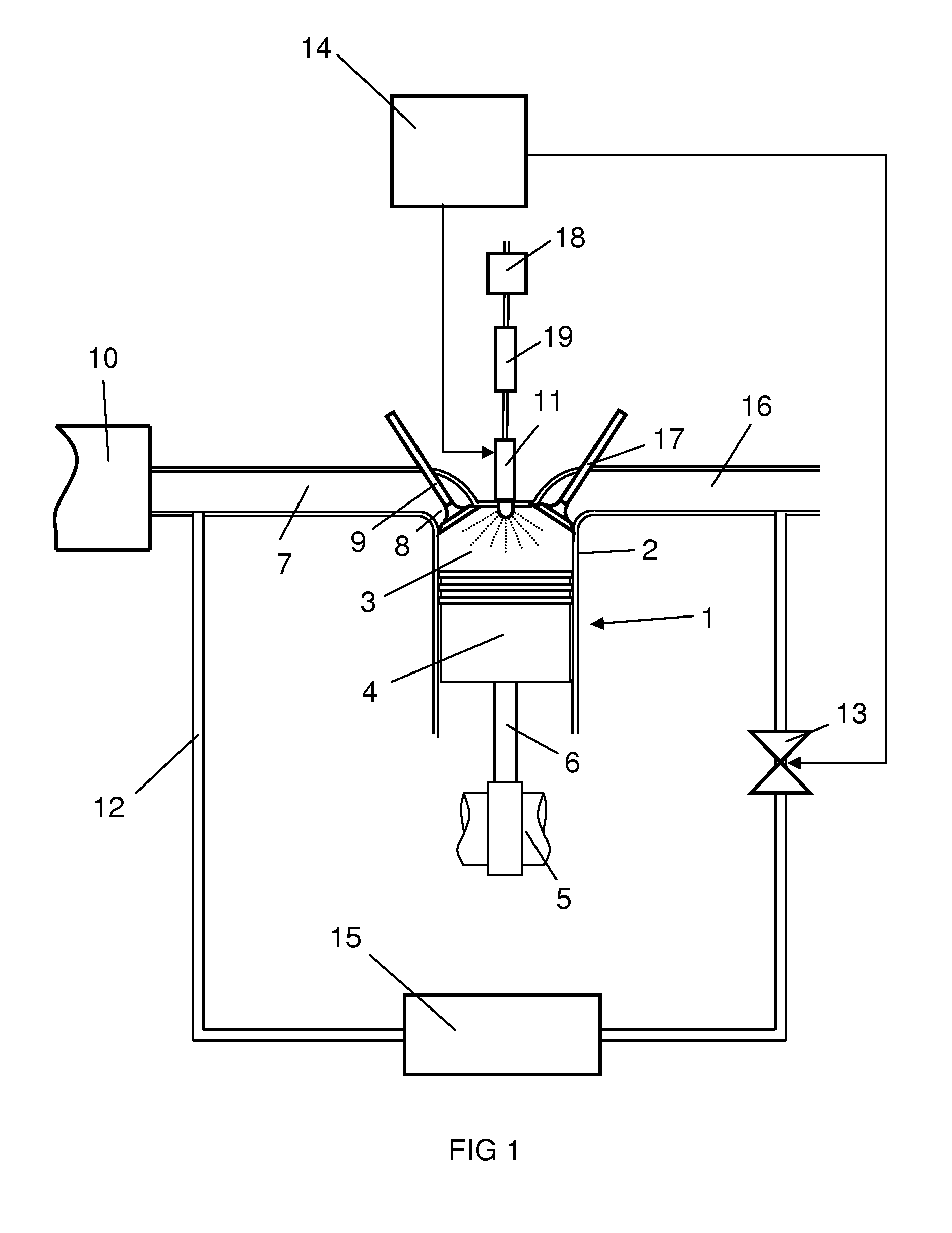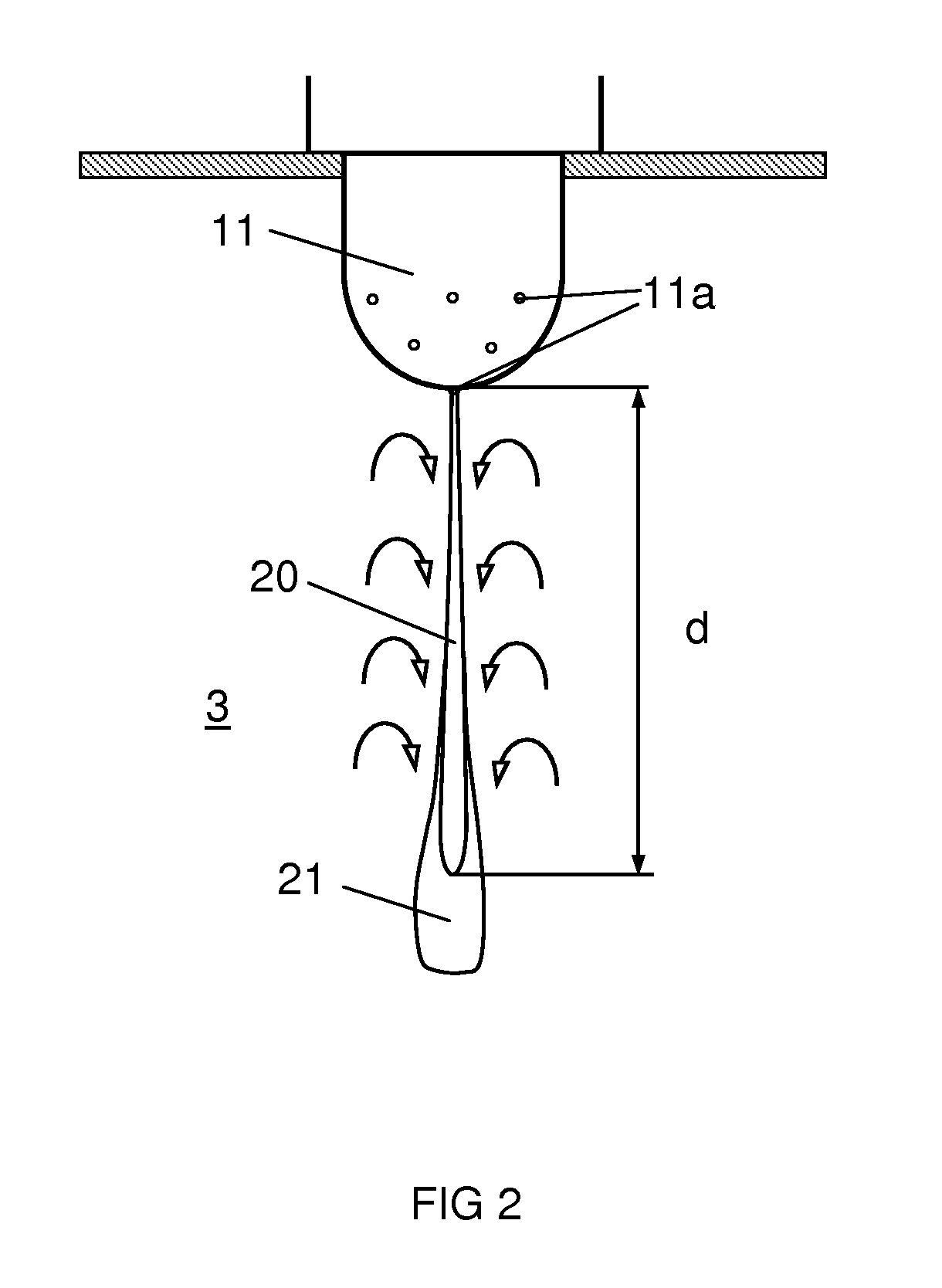Arrangement and method for efficient combustion of fuel in a combustion engine
a combustion engine and fuel arrangement technology, which is applied in the direction of machines/engines, mechanical equipment, electric control, etc., can solve the problems of rapid deceleration of fuel injected into the combustion space by the gaseous medium, and achieve the effects of shortening the load, good characteristics, and easy controllability
- Summary
- Abstract
- Description
- Claims
- Application Information
AI Technical Summary
Benefits of technology
Problems solved by technology
Method used
Image
Examples
Embodiment Construction
[0017]FIG. 1 depicts a cylinder 2 of a supercharged combustion engine 1. The cylinder 2 comprises a combustion space 3 bounded downwards by a movable piston 4. The piston 4 is connected to a crankshaft 5 by a connecting rod 6. The movements of the piston 4 in the cylinder 2 are converted to rotary motion by the crankshaft 5. The combustion engine 1 may comprise any desired number of such cylinders 2. An inlet line 7 is connected via an aperture 8 to the combustion space 3 to make it possible to supply compressed air to the combustion space 3. An inlet valve 9 is arranged in the aperture 8 to control the supply of air to the combustion space 3. A charge air cooler 10 is arranged in the air line 7 to cool the air before it is led into the combustion space 3. The inlet line 7 is connected to a return line 12 for recirculation of exhaust gases. The return line 12 comprises an EGR valve 13 by which it is possible to recirculate a desired amount of exhaust gases to the inlet line 7. The r...
PUM
 Login to View More
Login to View More Abstract
Description
Claims
Application Information
 Login to View More
Login to View More - R&D
- Intellectual Property
- Life Sciences
- Materials
- Tech Scout
- Unparalleled Data Quality
- Higher Quality Content
- 60% Fewer Hallucinations
Browse by: Latest US Patents, China's latest patents, Technical Efficacy Thesaurus, Application Domain, Technology Topic, Popular Technical Reports.
© 2025 PatSnap. All rights reserved.Legal|Privacy policy|Modern Slavery Act Transparency Statement|Sitemap|About US| Contact US: help@patsnap.com



